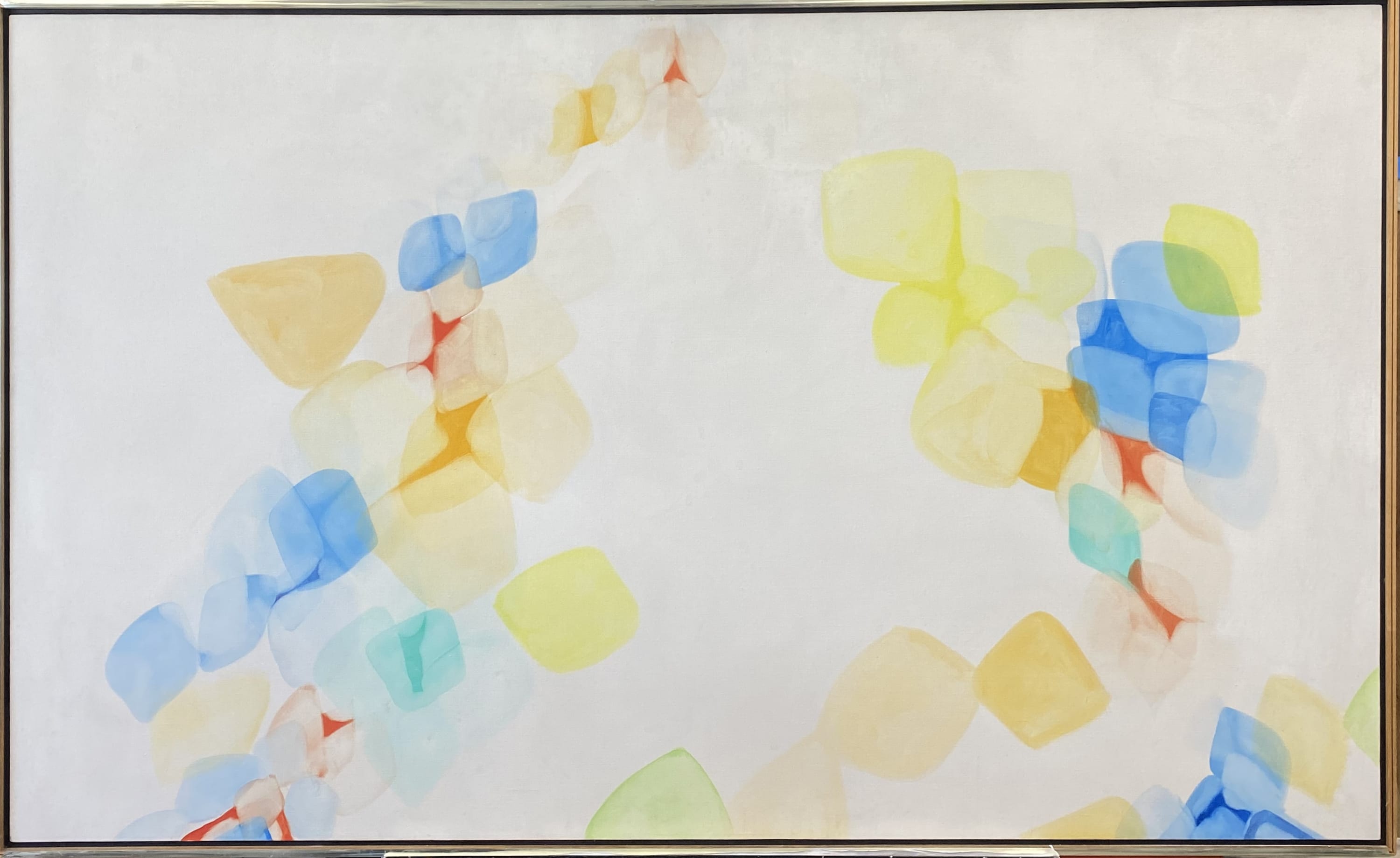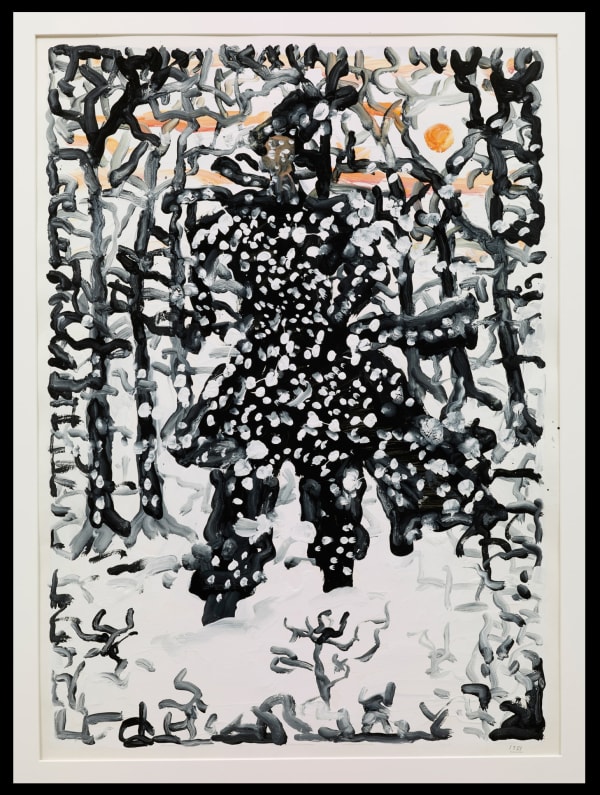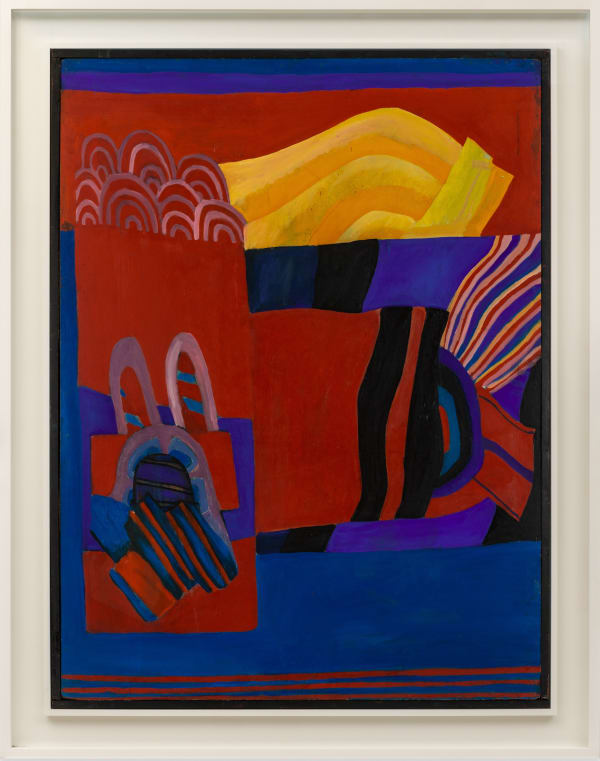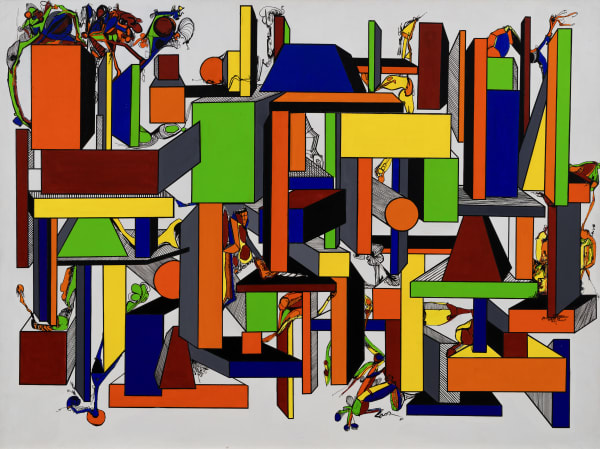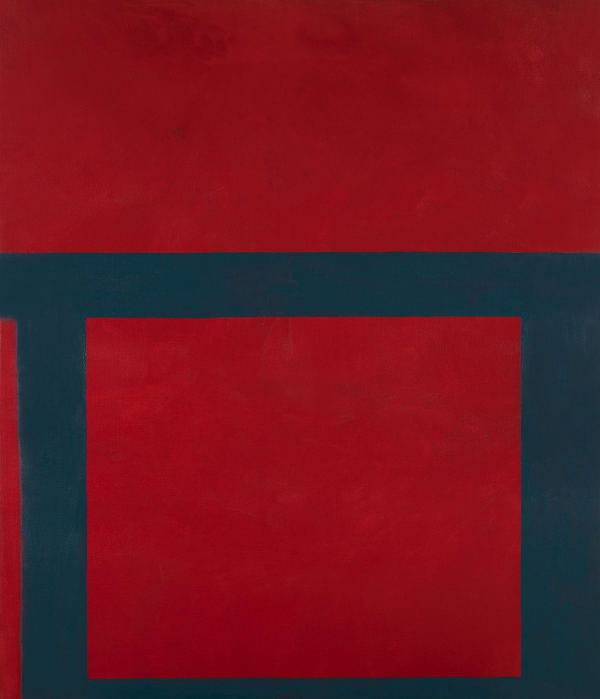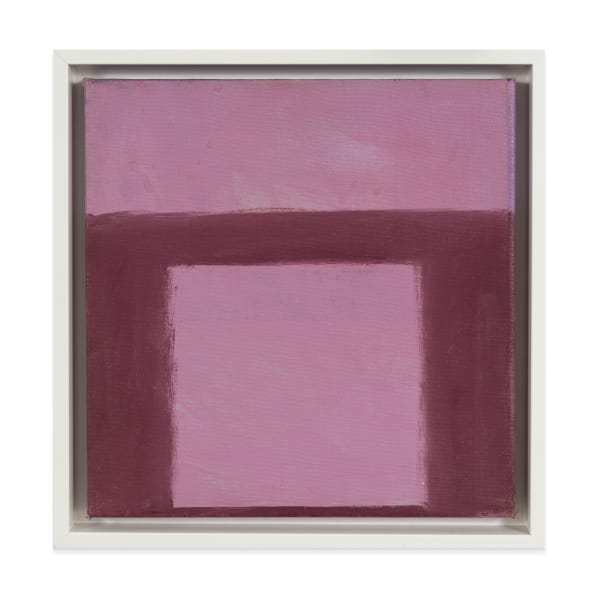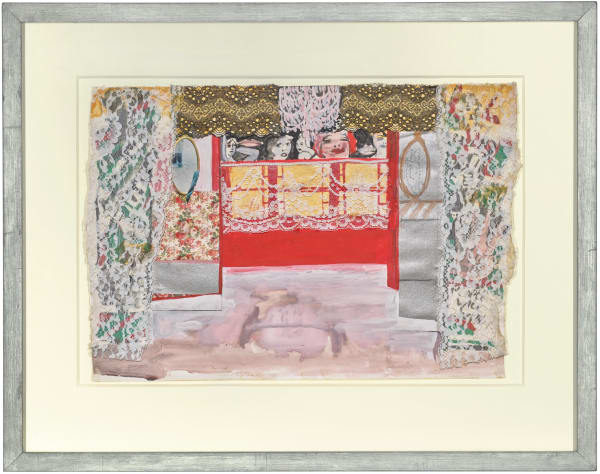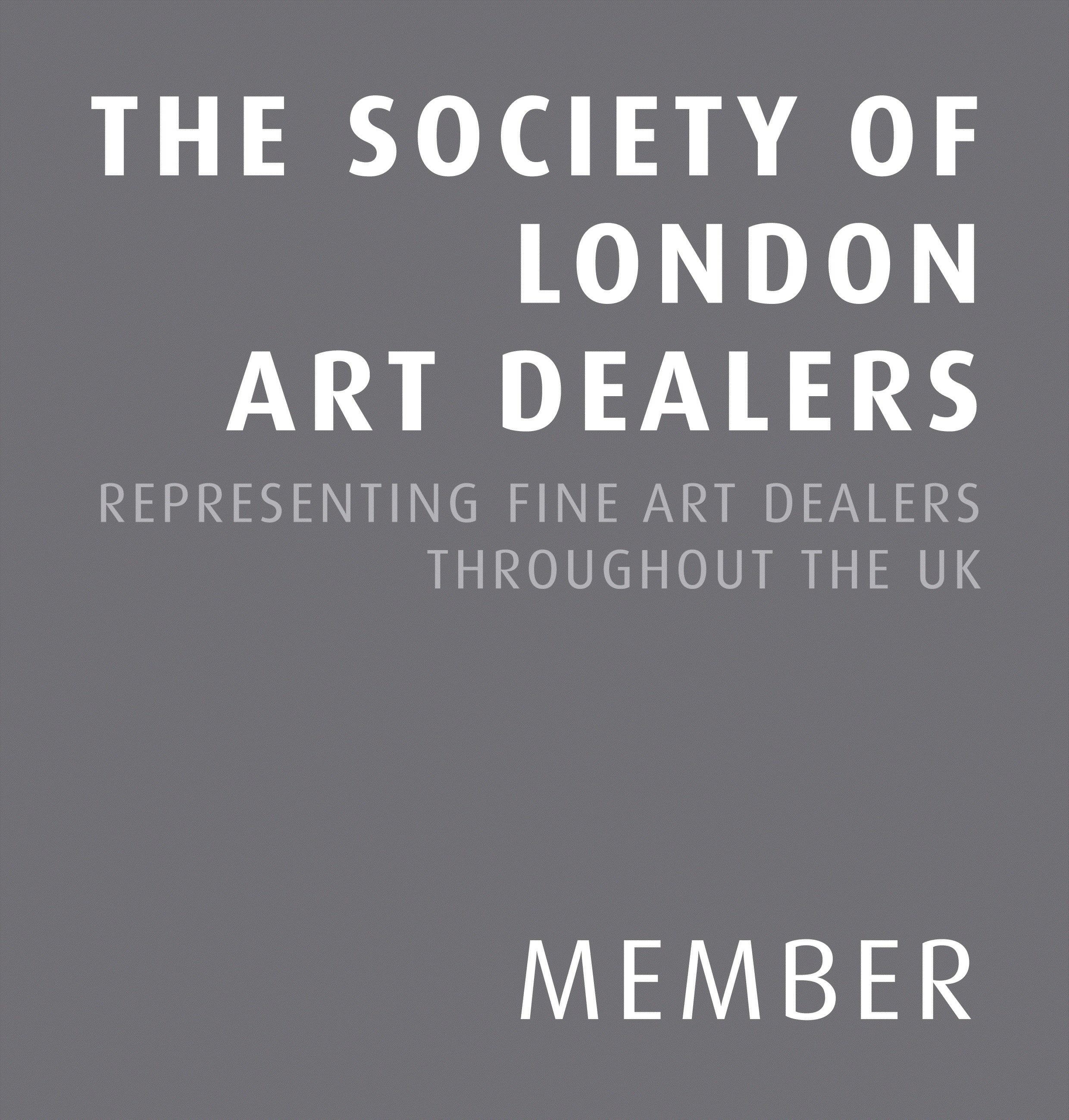Gazelli Art House is delighted to announce its debut at the Dallas Art Fair 2025, presenting a selection of works by pioneering artists Derek Boshier (1937—2024), Pauline Boty (1938—1966), Harold Cohen (1928—2016) and Jann Haworth (b. 1942). The selection underscores the significance of Dallas—and Texas more broadly—in the careers of major British post-war artists. Some lived in the state, while others have been exhibited and collected by leading Texan institutions, including the Dallas Museum of Art and the Museum of Fine Arts, Houston.
-
-
 Alice Baber © Richard Galef
Alice Baber © Richard Galef -

Alice Baber, The Golden Circle of the Jaguar, 1981 -
 Derek Boshier, 2021 © Dhiren Dasu
Derek Boshier, 2021 © Dhiren Dasu -
Taken from his Texas series, painted during his years living in Houston in the 1980s and early 1990s, these include pieces such as Fashion Victim in the Snow (1987) and Sea Visitor (Boat) (1987) which reflect Boshier’s engagement with pop culture iconography, filtered through his sharp wit and European perspective. The thick impasto and exaggerated gestures create a sense of both physical and conceptual tension, and are indicative of Boshier’s critical yet playful commentary on identity, spectacle, and cultural mythmaking.
-
 Untitled (Pauline Boty on a Bed) © Michael Ward
Untitled (Pauline Boty on a Bed) © Michael Ward -
Pauline Boty’s Untitled (Red Yellow Blue Abstract) (1961) is one of only four abstract paintings the charismatic artist made in a career that was tragically cut short At the age of 28. The work captures the dynamism of the Swinging Sixties through its bold colour interplay and shows a dialogue with the work of friends and peers such as David Hockney and Derek Boshier. Complementing this is Boty’s rarely exhibited portrait of mafia boss Big Jim Colosimo (c.1963), rendered in her signature photorealistic black-and-white style and framed within a playful fairground-inspired border.
-
 Image courtesy of the Sir Frank Bowling website
Image courtesy of the Sir Frank Bowling website -
 Sir Frank Bowling, Irene, 1968/1978/2019
Sir Frank Bowling, Irene, 1968/1978/2019
-
 Harold Cohen with SGI System, Boston Computer Museum, 1995 © Hank Morgan & Harold Cohen Trust
Harold Cohen with SGI System, Boston Computer Museum, 1995 © Hank Morgan & Harold Cohen Trust -
These works offer a unique perspective on Cohen’s groundbreaking fusion of art and code, tracing his transition from traditional painting to computational creativity. Developed in the 1970s at Stanford’s Artificial Intelligence Laboratory, AARON is one of the earliest AI programs for autonomous art-making, capable of making intricate compositions without direct human intervention. Cohen’s research into machine-generated imagery established him as a foundational figure in generative art, influencing subsequent waves of artists working at the intersection of technology and aesthetics.
-
 Harold Cohen, Machine Painting Series TCM#21, 1990-2000
Harold Cohen, Machine Painting Series TCM#21, 1990-2000
-
 Lilly Fenichel © Lilly Fenichel Foundation
Lilly Fenichel © Lilly Fenichel Foundation -

-
 Jann Haworth, 2021 © Chad Kirkland.
Jann Haworth, 2021 © Chad Kirkland. -
Haworth’s works during this period recontextualised craft as a means of challenging the masculine aesthetics of the Pop Art movement. Throughout the 1960s, she developed a series of cloth-based works which disrupted and complicated depictions of the female form in much of the art of the time, positioning her among the leading figures of British Pop alongside Richard Hamilton and her then-husband, Peter Blake. Haworth’s impact on contemporary art continues to be recognised globally, with several major institutional exhibitions currently on view.
-
Additionally Available Artworks
-

